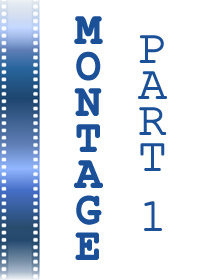 Question
Question
Jim Sarantinos asks:
Can you tell me how to format montage sequences?
Montage Definition
“A montage is a collection of very short scenes, sometimes only a single shot each, designed to show a series of actions over time.” – John August
Order of Operations
Correct formatting — whether it’s a montage sequence or any other element — can influence a reader’s perception of the quality of a script. So I thought it might be helpful to look at the process I follow, whenever I want to make sure I’m formatting something the “right” way.
- Search JohnAugust.com for tips
- Refer to Christopher Riley’s book, The Hollywood Standard
- Refer to David Trottier’s book, The Screenwriter’s Bible
- Consult my library of scripts and Scott Myers’ GoIntoTheStory.com
- Use what makes sense to me. Throw out the rest.
So let’s follow that approach with the aim of determining the correct format for a montage sequence.
1) Search JohnAugust.com
John August’s site is packed with comprehensive and authoritative information on all aspects of screenwriting. Since John is an extremely successful, highly respected, working screenwriter, his suggestions and insights typically trump all of my other sources for formatting advice.
In this article, John explains how to format a single location montage:
Depending on the needs of the sequence, there are a few different options for how to write a montage in screenplay form.
The easiest example is when all the action is taking place in one location. For instance, say you have a character trying on clothes — the infamous Changing Room Montage. It might read something like this:
INT. CHANGING ROOM -- DAY
Holly enters with a massive armload of clothes. Kyle’s eyes bulge. Holly pulls the curtain shut.
MONTAGE
Holly emerges, dressed in different outfits, each more elaborate than the last. Kyle watches in horror and dismay, checking his watch as the madness continues.
And when it’s time to finish, a single line of “END MONTAGE” lets the reader know you’re going back to normal time.
In that same post, he also provides a similar approach to formatting chase-type sequences that fall within one master location.
But what if you have multiple locations, and different times (i.e. DAY and NIGHT)? We’ll explore that in the next post.
In the meantime, since we’re on the subject, here’s an infamous changing room montage from The Sweetest Thing. It even breaks the “fourth wall”!





Trackbacks/Pingbacks